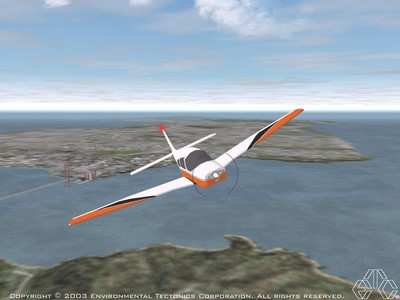FAA Continues To Educate GA Pilots About LOC
The FAA and the general aviation community’s national #FlySafe campaign helps educate GA pilots about the best practices to calculate and predict aircraft performance and to operate within established aircraft limitations.

A Loss of Control (LOC) accident involves an unintended departure of an aircraft from controlled flight. LOC can happen when the aircraft enters a flight regime that is outside its normal flight envelope and quickly develops into a stall or spin. It can introduce an element of surprise for the pilot.
The NTSB calls it “the problem that never went away.” CFIT or Controlled Flight Into Terrain continues to claim up to 17 percent of all general aviation fatalities, even though many pilots have technologies on their side.
CFIT occurs when an airworthy aircraft, under pilot control, flies into the ground, a mountain, a body of water, or an obstacle. Most often, the pilot or crew is unaware of the looming disaster until it is too late. CFIT most commonly occurs in the approach or landing phase of flight.
Accidents where the aircraft is out of control at the point of impact are not known as CFIT. Rather, they are considered uncontrolled flight into terrain. Similarly, incidents resulting from deliberate acts, such as terrorism or suicide by the pilot, are not considered to be CFIT.

There are many reasons why a plane might crash into terrain, but pilot error is the most common, particularly a loss of situational awareness. A pilot may not know what his or her actual position is, and how that position relates to the surrounding terrain. Fatigue can cause very experienced pilots to make mistakes.
CFIT accidents often involve a collision with terrain which usually occurs during low visibility conditions and when the aircraft is on approach to a destination airport. Other contributing factors include weather, approach design and documentation, failure to use standard phraseology, and malfunctioning navigational aids.
One of the problems in reviewing GA CFIT accidents is the lack of human factors data. This is due to the high fatality rate of CFIT accidents, and the fact that most GA aircraft are not equipped with data recording systems.
GA pilots have a unique challenge in that there is often only one pilot to conduct all of the flight and decision making duties. Unlike with a crewed cockpit, GA operations don’t usually have a second pilot to help with avoiding a CFIT accident.
Therefore, it is vital that you as a single pilot, to ensure you are qualified for the intended flight, meet all regulatory requirements, and have the self-discipline to follow industry recommended safety procedures to minimize CFIT.
There are technologies that can help, including onboard alerting equipment. Air traffic control can act as an external warning too. However, external factors like fatigue, distraction, time pressure, procedural non-compliance, and more, can punch holes in your defense.
Realize that errors can happen, and layer redundancy into your operation. Verify your checklists, prepare for the unexpected. Fly rested, remain alert, undistracted, and focused on the operation. Don’t become complacent about safety. Your loved ones will thank you.
More about Loss of Control
Contributing factors may include:
- Poor judgment or poor aeronautical decision making
- Failure to recognize an aerodynamic stall or spin and execute corrective action
- Intentional failure to comply with regulations
- Failure to maintain airspeed
- Failure to follow procedure
- Pilot inexperience and proficiency
- Use of prohibited or over-the-counter drugs, illegal drugs, or alcohol
(Source: FAA. Image from file)
 ANN's Daily Aero-Term (04.26.24): DETRESFA (Distress Phrase)
ANN's Daily Aero-Term (04.26.24): DETRESFA (Distress Phrase) ANN's Daily Aero-Linx (04.26.24)
ANN's Daily Aero-Linx (04.26.24) Airborne 04.22.24: Rotor X Worsens, Airport Fees 4 FNB?, USMC Drone Pilot
Airborne 04.22.24: Rotor X Worsens, Airport Fees 4 FNB?, USMC Drone Pilot Airborne 04.24.24: INTEGRAL E, Elixir USA, M700 RVSM
Airborne 04.24.24: INTEGRAL E, Elixir USA, M700 RVSM Airborne-NextGen 04.23.24: UAVOS UVH 170, magni650 Engine, World eVTOL Directory
Airborne-NextGen 04.23.24: UAVOS UVH 170, magni650 Engine, World eVTOL Directory




